For those who are searching online for a thin and light notebook computer for everyday use, I’m sure that the LG gram series of notebook computers will come out as one of the top results. Without much doubts, the LG gram notebooks are specially designed to make sure that its weight is prioritized. Even after many generations and iterations of the LG gram notebook computer, LG did not get distracted and still focused on ultra-portability and lightweight as one of its key selling point.
In our labs today, we’ve got the LG gram 16 for our tests. The latest LG gram 16 is equipped with the latest 12th Generation Intel Core processor. Specifically for our review unit, it comes with the Intel Core i5-1240P. The latest 12th Generation Intel Core processors utilizes a new hybrid core micro-architecture, which brings together two kinds of compute cores into a single package. For the Core i5-1240P, it consists of 4P (performance) cores and 8E (efficient) cores. Such a hybrid micro-architecture is said to better improve efficiency for longer battery life.
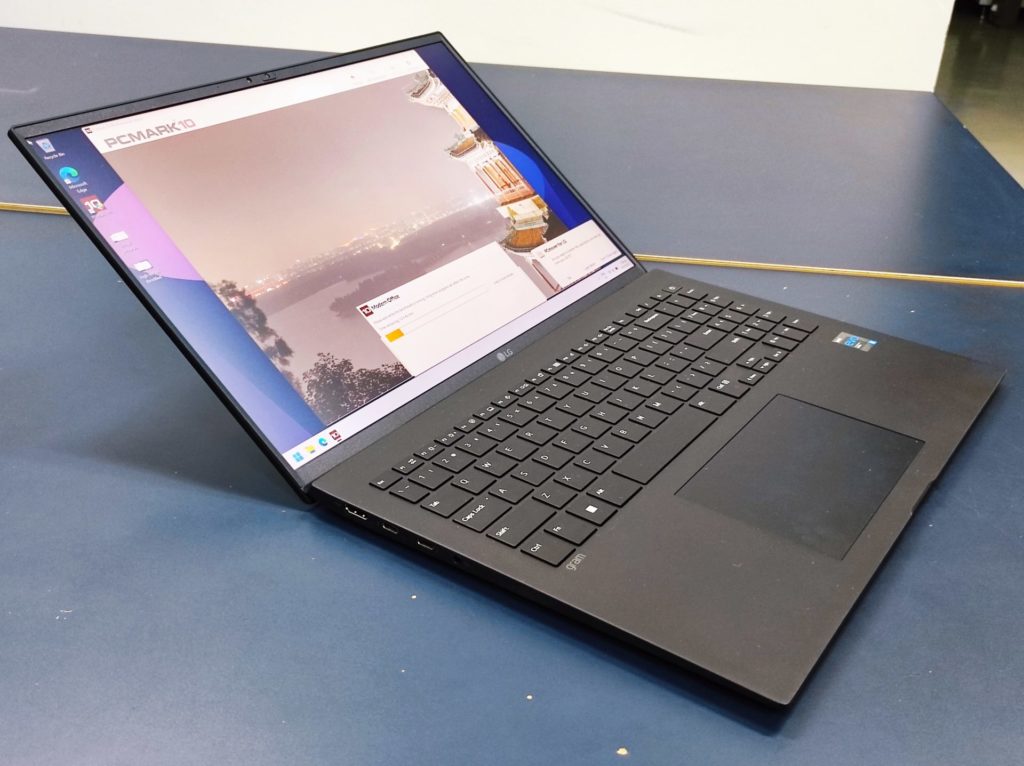
Specifications aside, let’s take a closer look to better understand what the whole LG gram 16 (2022) is all about.
The LG gram 16 (2022)
For a start, the LG gram 16’s thin and light design is sure to capture your attention. When held on your hands, you wouldn’t imagine that the LG gram 16 is actually that lightweight.
Some may argue that LG did manage to bring their 15.6-inch models to be below 1Kg, and that the current LG gram 16 weighs 1.2Kg, which seems to be somewhat backwards in innovation. The tradeoff in weight was the increase in the battery’s capacity, which now allows the notebook to run even longer on a single charge.
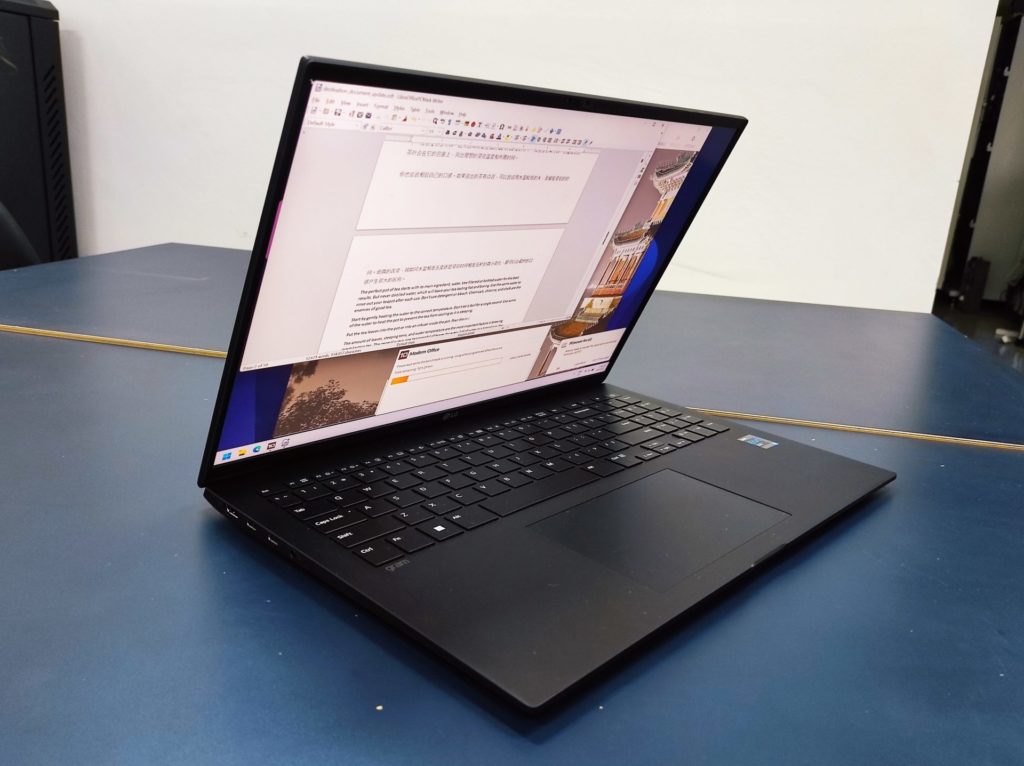
The LG gram 16 also comes with a 16:10 display, rather than the typical 16:9 display. This allows more vertical space on the notebook, making it more suitable for some productivity applications, such as spreadsheets and data work. This display is also of a WQXGA 2560 * 1600 resolution, ensuring that the image quality is still acceptable despite its large screen size. Designed for professionals, the LG gram 16 also features an anti-glare display, allowing users to fully focus on their work anywhere they are.
With the introduction of the 12th Generation Intel Core processors, DDR5 memory is also now supported. Specifically, the LG gram 16 is equipped with LPDDR5 modules which not only runs faster than its predecessors but also is more power efficient. What’s available in Singapore will be a version with 16GB of LPDDR5 memory, and either 512GB or 1TB of SSD storage.
What I really appreciate what LG retained on their gram notebooks is the full sized ports. Rather than requiring multiple dongles and converters to let your external peripherals work, the latest gram 16 comes with 2 x Type-A USB 3.0 ports and even a full-sized HDMI out port. On top of that, there are also two Thunderbolt 4 ports, a MicroSD card slot and a headphone/microphone combo jack.

The gram 16 still retains its large keypad, which we found it to be responsive and easy to use. However, we’ve got to say that we’re not a fan of the keyboard’s placement and design. In order to accommodate a number, the size of the notebook keys were reduced. The keys are also more cramped, and generally, made it a lot more difficult to get used to it.

Generally, the simple and minimal design of the LG gram 16 also makes the product quite unique. There would be a crowd that will appreciate the simple design, which is now also accentuated with its thin display bezels. Overall, the gram 16 is very well-designed and made.
Test Setup and Performance
In our tests, we are going to compare the LG gram 16 with the ASUS Zenbook 14 OLED. Both notebooks use a similar class of 12th generation Intel Core processors. The former has an i5-1240P while the latter has the i7-1260P. Both processors have the same number of core configuration. On top of that, we will also throw in the ASUS Zenbook S 13 OLED into the mix, so as to find out how AMD’s latest product stands in this lineup as well.
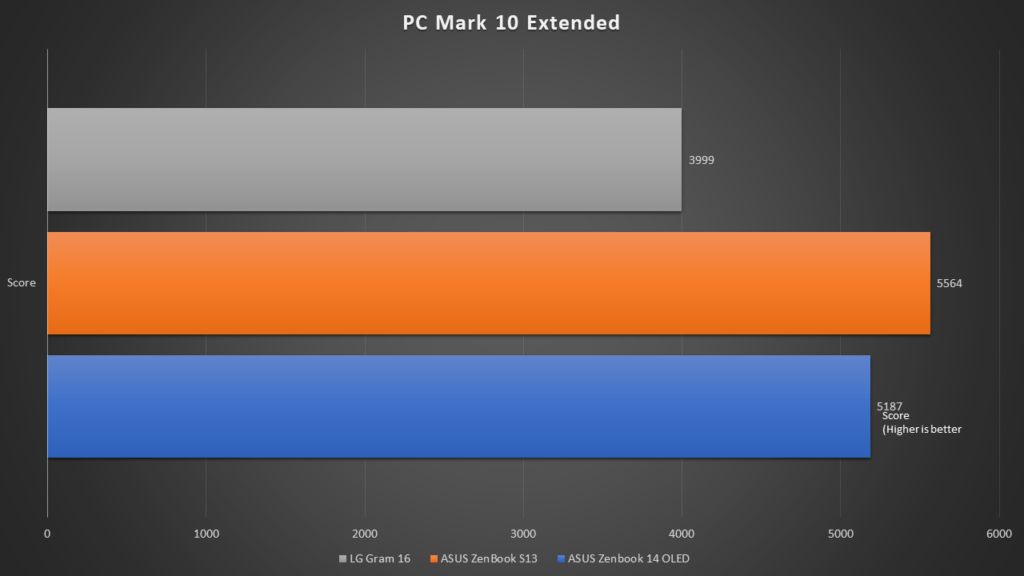
Things didn’t really look good at a start, as the LG gram 16 performed significantly worse that similar products of its class. It seems that there is something off about the product, which resulted in such a low score.
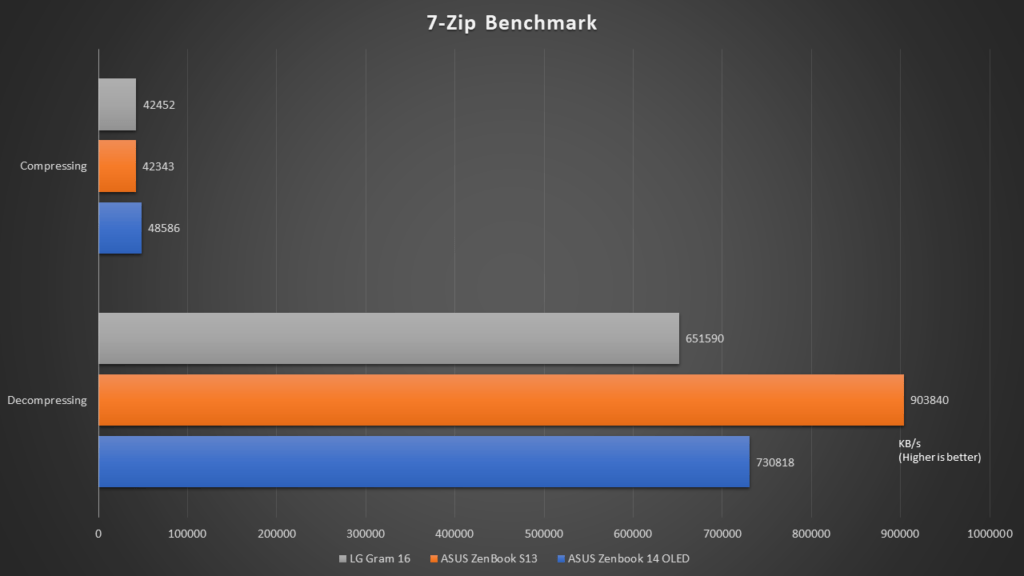
While the compressing results was comparable, there is still too much of a gap when it comes to decompressing tests.
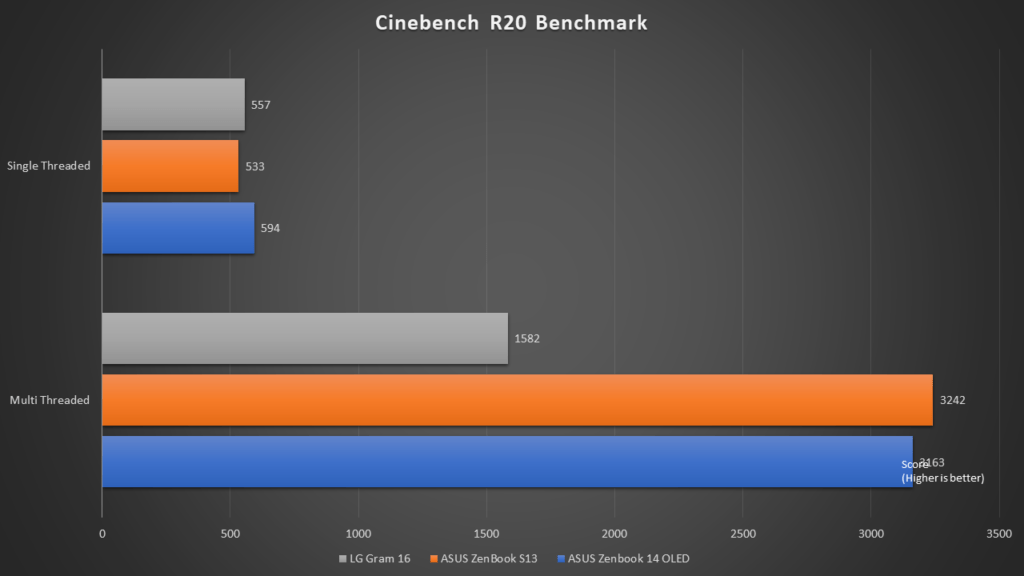
It was then made clear to us that the LG gram 16 performed fine with single threaded applications. However, when all of its core was stressed all at once, it wasn’t able to perform up to its full potential.
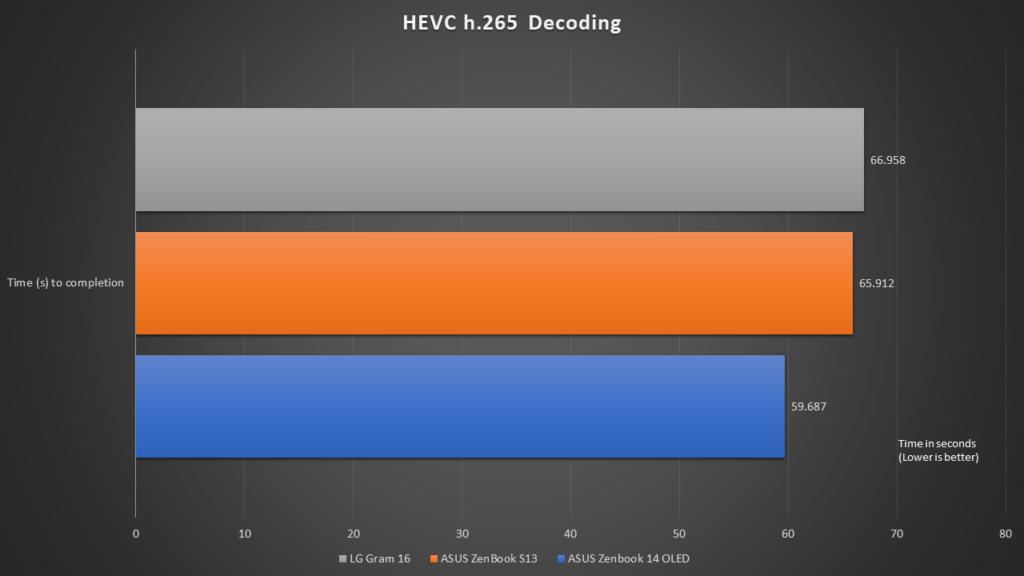
Similarly, for the decoding test, the LG gram 16 came up last as well.
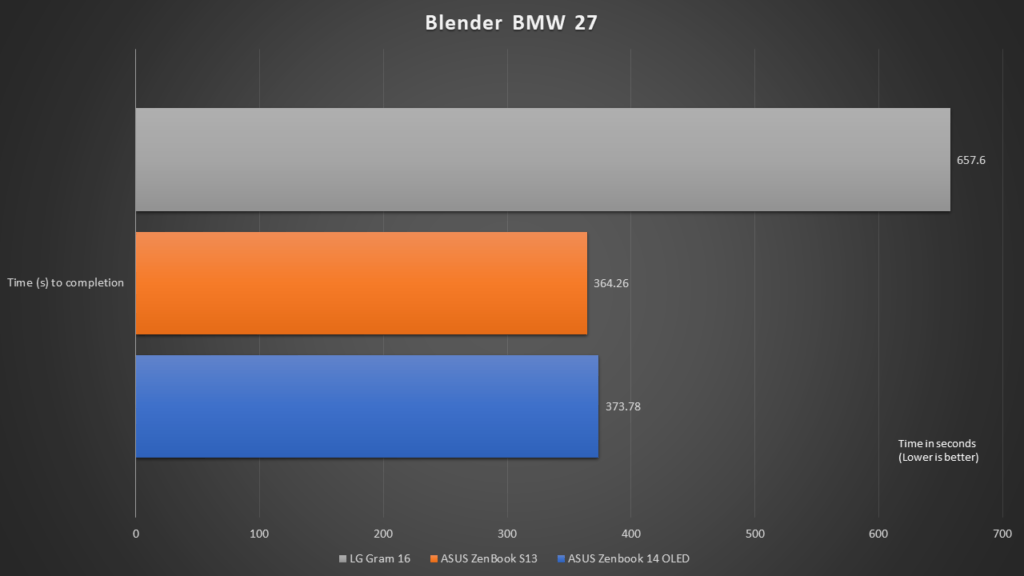
The real performance gap was shown on the Blender rendering test. The LG gram 16 was almost two times slower than competing devices.
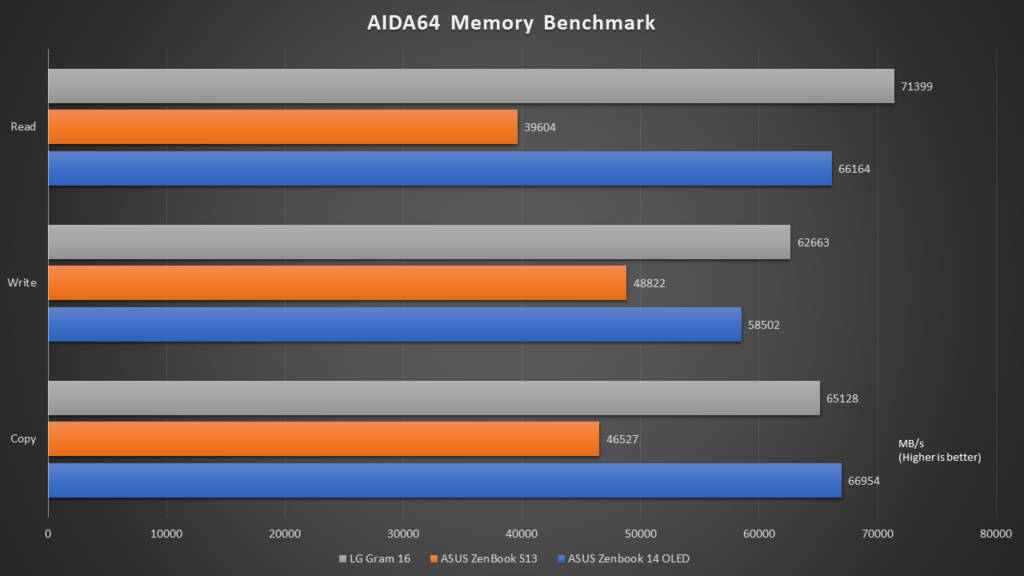
However, the LPDDR5 memory on the notebook did show its benefits. Its raw performance was quite high, but do take these memory performance values as a pinch of salt, as may not directly affect performance.
Temperature and Power Limitations
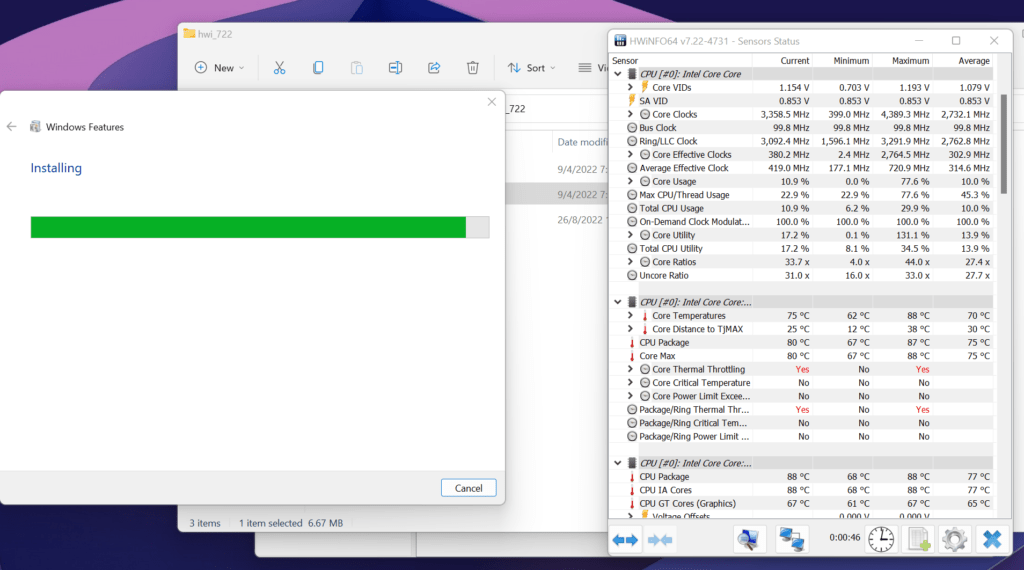
Unfortunately, we’ve got to say that the LG gram 16 was quite badly designed, in terms of its thermal dissipation and power control capabilities. For example, in the above screenshot, even though the notebook was just installing some Windows features, it managed to run so hot that it had to thermal throttle its performance.
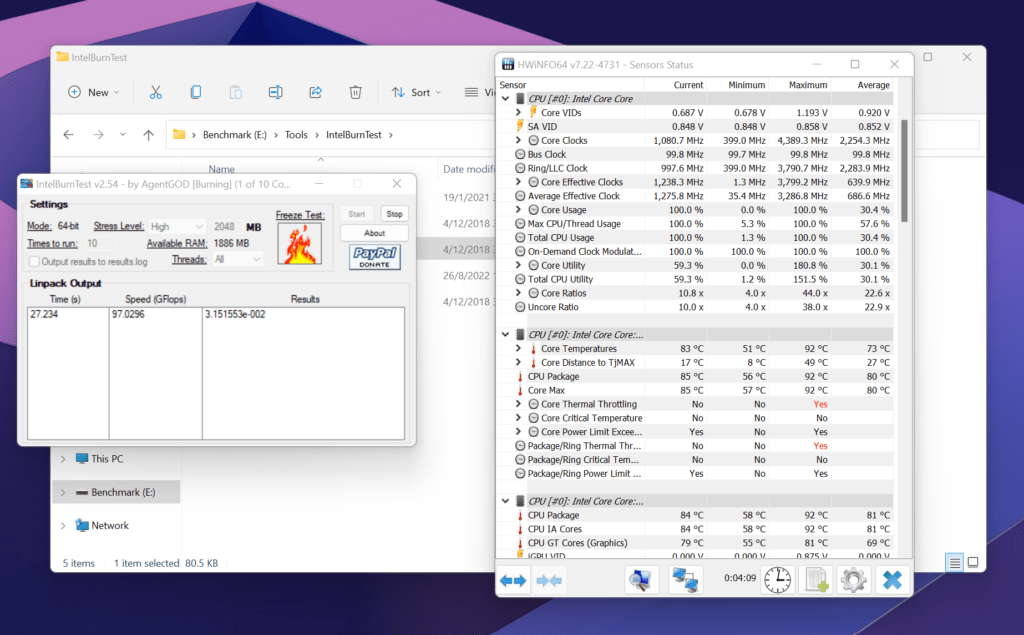
Furthermore, as we ran stress tests on the LG gram 16, it was shown that the device had reached it power limit, and that it would not perform any better to cater to the new workloads.
Final Words and Conclusion
Yes, the LG gram 16 is one of the lightest 16-inch notebook we’ve ever gotten our hands on. But in the pursuit of building a lightweight machine, it seems that the design team gave up on the notebook’s thermal and power design. These limitations prevent the notebook from fulfilling its purpose of processing of data quickly. It’s quite sad to see how much thermal and power limitations are bringing down the whole usability of the notebook computer.
Fundamentally, I’ve got to say that the LG gram 16’s design is flawed. It just shouldn’t be the case that installing a simple application would result in thermal throttling.
In the past, there was a lot of excitement over the LG gram series of notebook, but such a backward step in product development has certainly tarnished our impression of the brand and notebook products. To put it crudely, no matter how lightweight the notebook is, we will not recommend this notebook. It’s crippled by its own design.


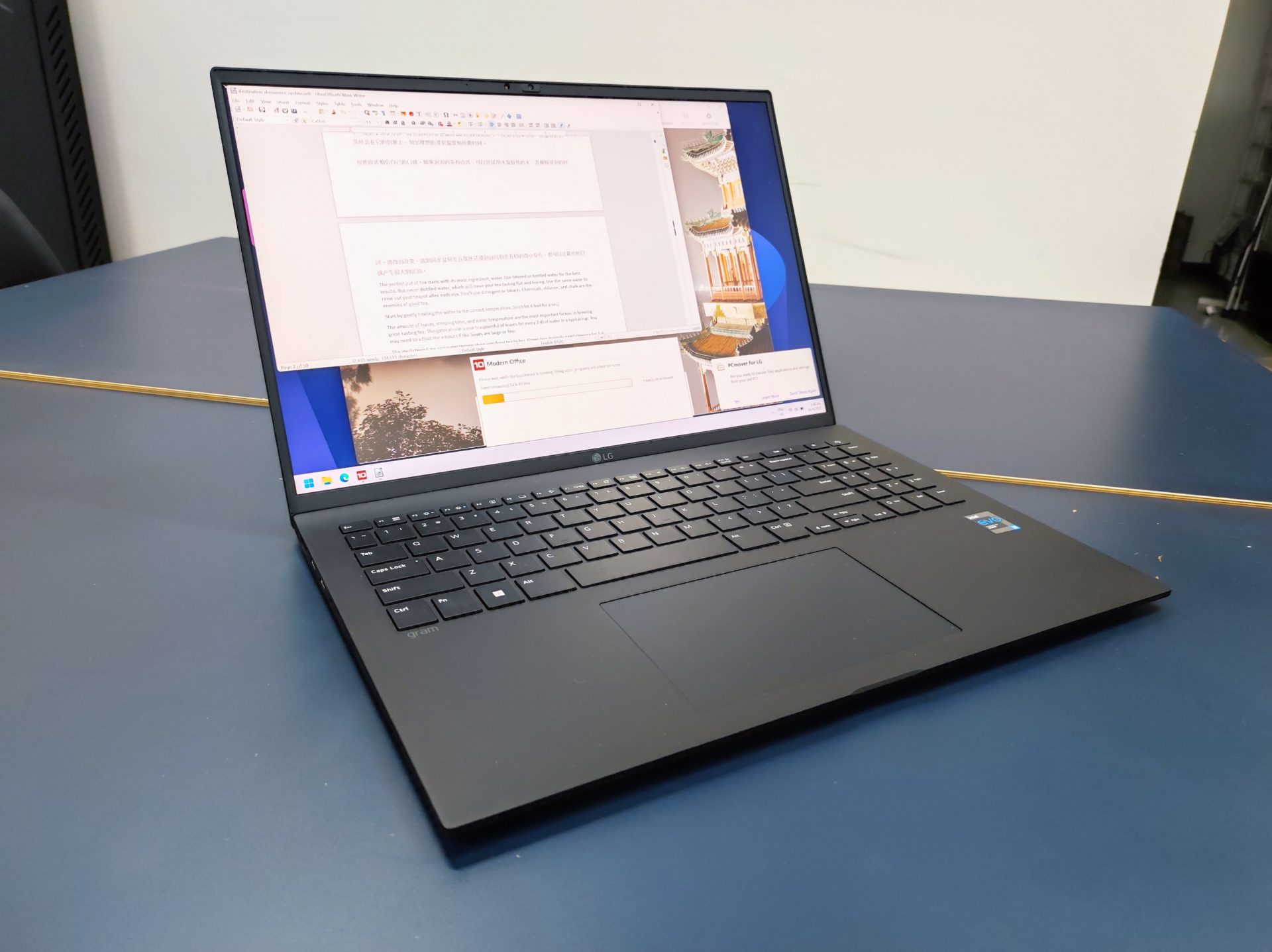
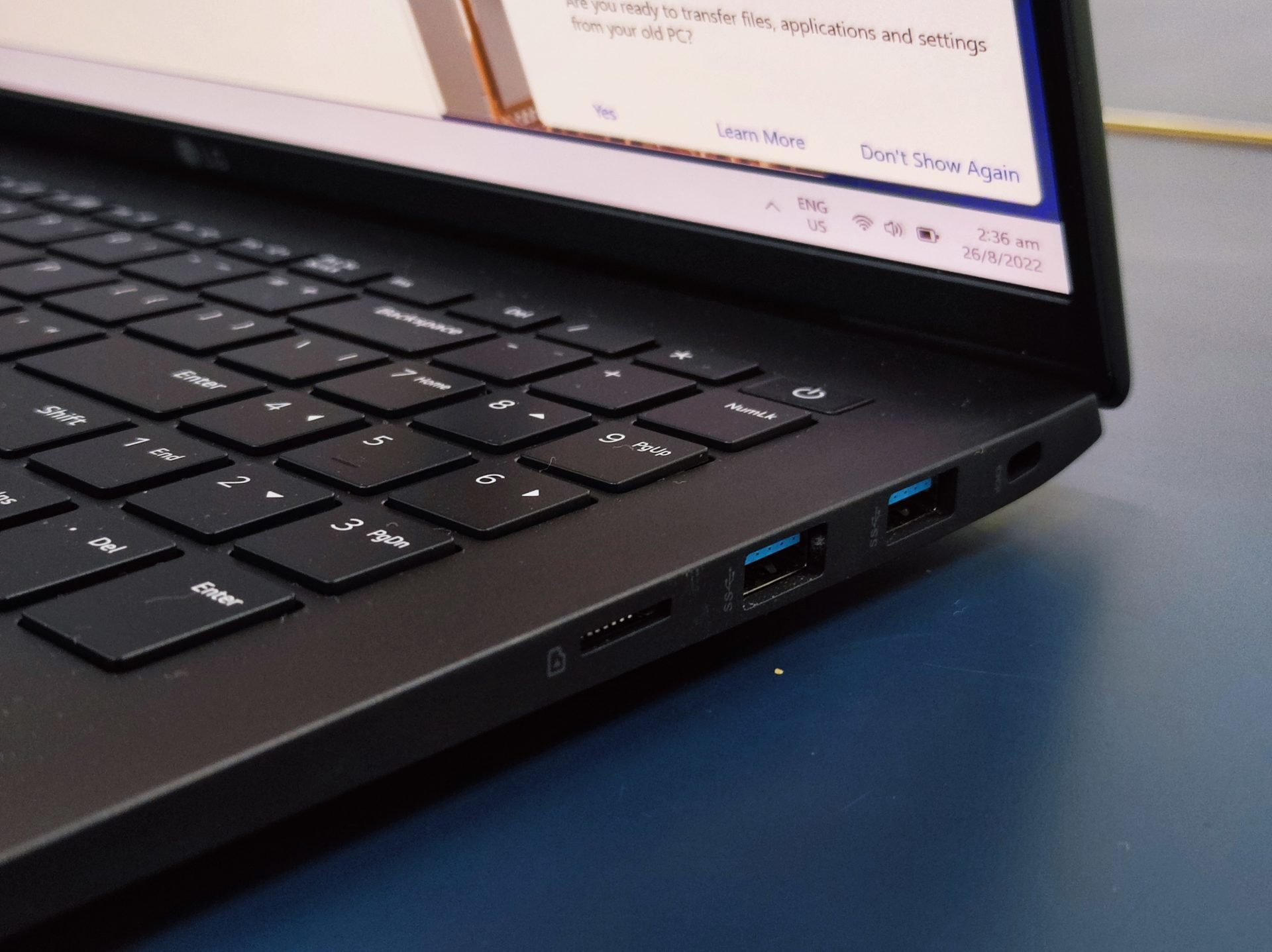
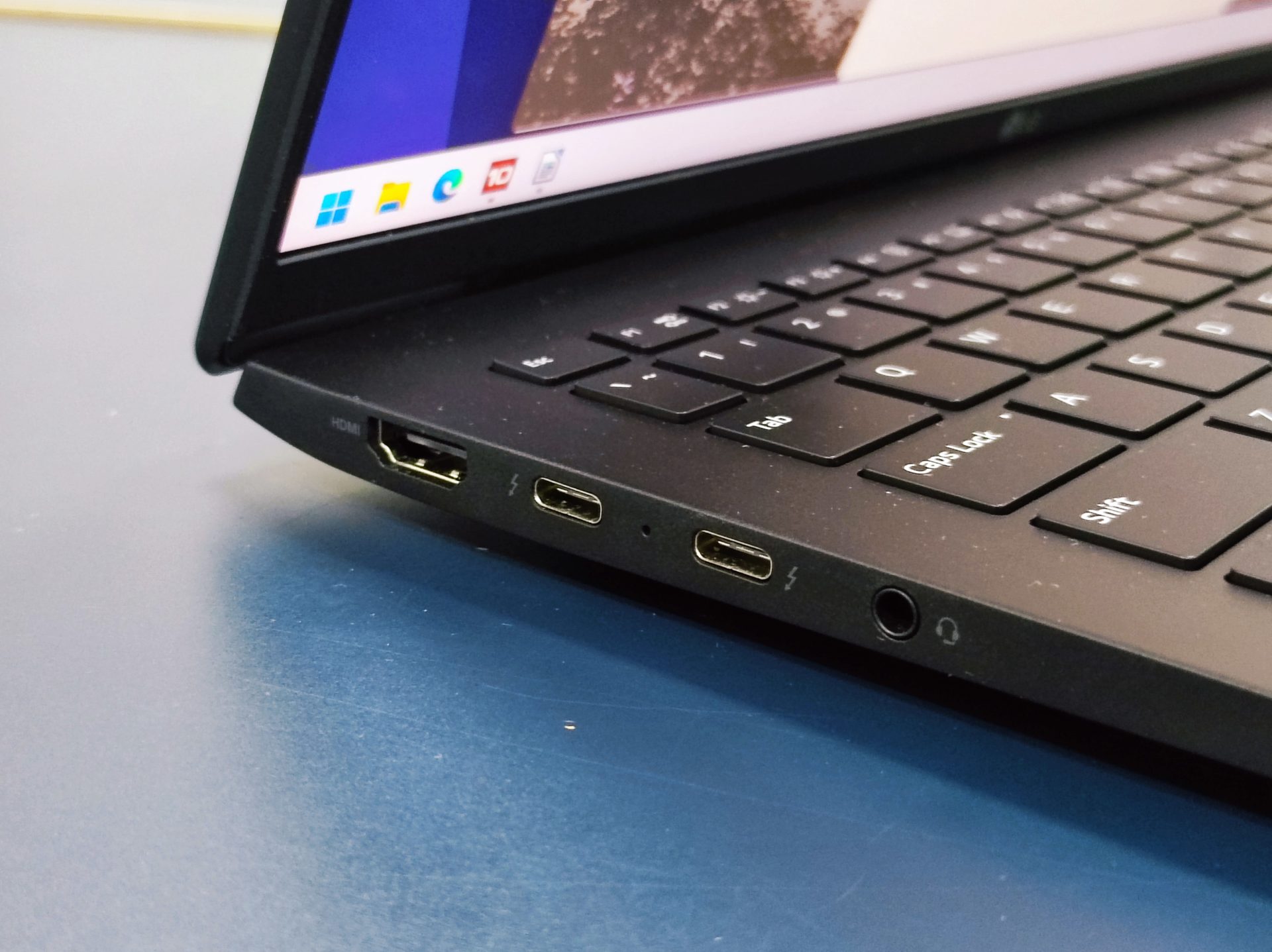




Nice review. What power profile was used for tests? LG Gram power profile can make a huge difference.
Can you describe noise and fan behavior under load and when doing simple tasks like web browsing?
There were no power profiles to choose from for this unit. It performs very quiet, even on load.